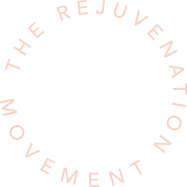The common skin condition melasma is caused by an overproduction of cells that results in brown patches on the face, neck, or forearms. While women are more likely to get it than men, as well as people with darker skin who have more active melanocytes (the color-making cells in the skin) than light-skinned people, it can affect anyone. Sun protection, including sunscreen and a sun hat, can help prevent the condition. Because it often occurs during pregnancy, it is also called “the mask of pregnancy.”
Causes
Although it is unclear what causes melasma, it is believed to be due to an overproduction of melanocytes. Usually, melasma is triggered by:
- Sun exposure: Melasma is often more visible during the summer as it is triggered by ultraviolet (UV) light from the sun, which stimulates the melanocytes. Sun exposure can make fading melasma return.
- Hormonal changes: Melasma during pregnancy is called chloasma, also known as “the mask of pregnancy.” Other hormonal influences that trigger the condition include birth control pills and hormone replacement medicine.
- Skincare products: Some products irritate the skin and can worsen melasma, which is why it’s best to choose natural products or those for sensitive skin.
Treatments
To avoid melasma, you should wear sunscreen daily in addition to a wide-brimmed hat and sunglasses when you’re outside. Because skin irritation can cause melasma, it’s best to avoid waxing and only choose gentle skincare products that don’t burn or sting on your skin. Pregnancy-induced melasma or that triggered by birth control pills usually fades once the baby is born or the woman stops taking birth control pills. While it can fade on its own, there are also a number of effective treatments available for melasma. These include:
- Hydroquinone: This prescription medication is applied to the affected skin and helps to even out the skin tone.
- Tretinoin and corticosteroids: Tretinoin or a corticosteroid lightens the skin, which helps fade the melasma. It can also be combined with hydroquinone in a blended, or so-called triple cream.
- Topical medicines: Other medicines your dermatologist may prescribe for topical skin application include kojic acid or azelaic acid.
- Clinical treatments: Skin creams or medicine may not always be effective when applied to melasma. In that case, a spa or clinical treatment like microdermabrasion, dermabrasion, a chemical peel, light-based or laser treatment may help. Make sure to only go to a reputable clinic or have the procedure performed by your trusted dermatologist.
















